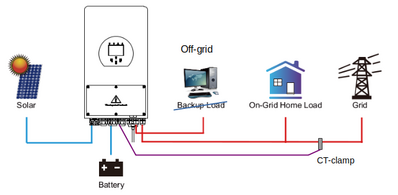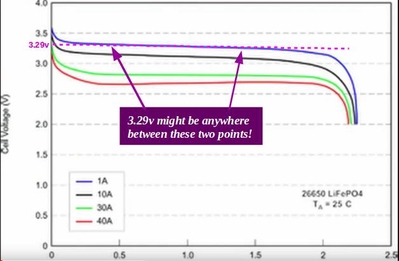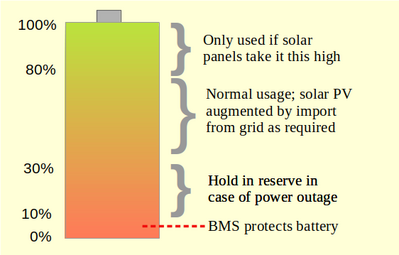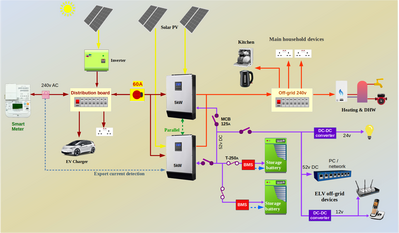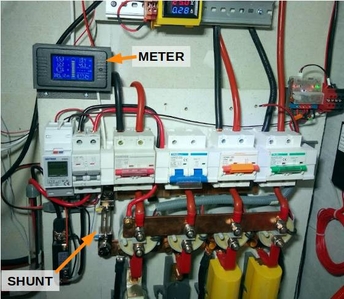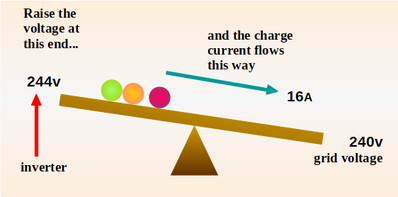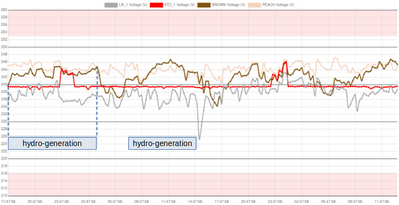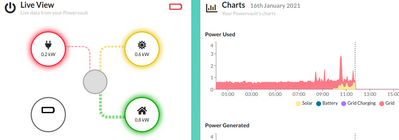Adding battery storage to SolarEdge PV system
Hi, I think I've narrowed down my choice to a Sunsynk 5kw inverter with the new 32kwh Fogstar battery. Will also be getting a Zappi car charger at the same time. Does anyone have any experiences of a setup like this? Would really appreciate confirmation that I can do the following please:
I want to ensure that:
- Car charger cannot "see" the battery, so only charges from grid or solar (most likely I'll only be charging overnight when no solar, but I'd like the option too of charging in the daytime from grid only if possible)
- I can prioritise excess solar to be exported rather than stored in the battery (I want to only charge battery 00:00-07:00, but this could change in the future)
- I can export any leftover battery to grid at the end of the day
- I have visibility over solar generation, export, battery usage etc in Home Assistant. I am currently doing this with SolarEdge but with Sunsynk/Zappi in the mix do I need something like a Harvi? (suggested by my installer).
Also I couldn't quite understand the two options provided to me for the car charger, I could have it set up with 1 or 2 consumer units. Which would be optimal?
Thank you
nazuro
Hi, @nazuro1041.
I can't comment specifically on Sunsynk inverters or the Fogstar battery but in a more general sense I have a very similar setup. My inverter is a Growatt - as is the battery - and I charge my car with a Zappi, controlling the whole lot through Home Assistant. I can therefore cover most of your points.
Posted by: @nazuro1041...
I want to ensure that:
- Car charger cannot "see" the battery, so only charges from grid or solar (most likely I'll only be charging overnight when no solar, but I'd like the option too of charging in the daytime from grid only if possible)
...
Your charger will not be able to "see" the battery at all. However, the inverter will therefore only view your Zappi as another load just like the 'fridge, the oven or a telly. As such, it will use whatever mode it's in to decide where the energy should come from to fulfil that load - solar PV, battery or grid.
I don't know Sunsynk terminology, but in Growatt-speak the inverter (assuming it's a hybrid inverter) can only be in one of three modes.
- Load-first means its priority is meeting the load requirements and it'll do that by, in hierarchal order, PV first, battery next and then pull from grid as a last resort.
- Battery-first means its priority is charging the battery, so it'll pile all it can from PV to the battery and any house load will be pulled from grid whilst this is going on. Battery-first, Charge From Grid goes one stage further and will supplement the PV with power from the grid to charge the battery at the maximum rate allowed.
- Grid-first means its priority is exporting to grid, and it send all PV to the grid if it can, drawing on the battery to meet house load whilst there is battery charge available to do so.
In your scenario, under normal circumstances I'd expect your inverter to be in Sunsynk's equivalent to load-first mode. As such, any PV you generate would go towards the Zappi (up to its single-phase maximum of 7kW) and would be supplemented by power from the battery if there's any available to make it up to your the rate you're asking of the charger. It would only fall back on the grid once the PV and battery can't meet the load between them. My solution to this is a Home Assistant automation to detect when the Zappi is charging and immediately set the battery's minimum permitted state of charge to 90% (for you, 95% would be fine I expect) so that the car won't deplete the battery much but has a bit of wiggle room for if you're charging on Eco+ mode. So far that strategy has worked very well for me.
Posted by: @nazuro1041...
I want to ensure that:
- I can prioritise excess solar to be exported rather than stored in the battery (I want to only charge battery 00:00-07:00, but this could change in the future)
- I can export any leftover battery to grid at the end of the day
- I have visibility over solar generation, export, battery usage etc in Home Assistant. I am currently doing this with SolarEdge but with Sunsynk/Zappi in the mix do I need something like a Harvi? (suggested by my installer).
...
If you want to only run your Zappi in fast charge mode, it'll work fine on its own and the inverter will pile all 32 amps towards it in whatever way is appropriate given the inverter/battery configuration. If you want the Zappi to work in Eco or even more so in Eco+ mode, it'll need to know how much power is coming from your PV and so your installer will need to install a Harvi. I recommend you do that because of the ability to, conditions permitting, drive entirely on sunshine.
As for prioritising based on schedules, if the Sunsynk is controlled by a Home Assistant integration then you're sorted; you can make your own choices. If your tariff is Octopus Agile Incoming, you can go a stage further and put in place automations that react to half-hourly prices; I, for instance, have one particular automation that says if the price for the current half hour (suitably offset to take into account the randomised offset of the smart meter) changes and drops below zero then to immediately put the inverter into battery-first charge-from-grid mode and pile grid energy into the battery there and then 'cos I'm being paid for it. I also have another that does the opposite; if the inverter is charging from grid and the half-hourly price goes from negative to positive then put the inverter back into Load-First mode.
Now, I've only got a 6kW battery so with 32kW at your disposal you may choose to amend your rules but the principle's the same. You look at what you'd want to do manually to optimise your charging and discharging and then simply put some Home Assistant automations in place to do exactly that but with HA making the decisions for you based on the criteria you define. The only awkward part is identifying all the bits of logic involved in an automation and don't unwittingly make it too simplistic.
Does that help?
105 m2 bungalow in South East England
Mitsubishi Ecodan 8.5 kW air source heat pump
18 x 360W solar panels
1 x 6 kW GroWatt battery and SPH5000 inverter
1 x Myenergi Zappi
1 x VW ID3
Raised beds for home-grown veg and chickens for eggs
"Semper in excretia; sumus solum profundum variat"
@majordennisbloodnok Thank you so much! Very helpful. So, I need to get the Harvi installed to give me that extra fiexibility that I might want in the future.
What confuses me is that I'll have two inverters, and the best way to get the right data in to HA. Presumably I'll use a combination of SolarEdge, Sunsynk, and Harvi integrations.
I'm also still not sure I understand the two options presented to me. I've noted one of the configurations had 2 consumer units (one for battery one for EV), or 1 CU. He explained it like one option would be the battery system never ever know an ev charger is installed, Or the other option would allow me to charge both EV and battery at the same time so they can never conflict with each other (I think this is what I want, given I plan to charge both up between 00:00-07:00, but I'm really not sure). Do you know what this means?
Thank you!
Jamie
What you've written @nazuro1041 provides us with an excellent overview of what you want to achieve, but the Sunsynk inverter doesn't work like that!
I'm going to try and explain some concepts, rather than give specific directions to you.
Please ask for clarifications as required.
I'm about to change my home storage-battery system from using Growatt to Sunsynk inverters.
Thus I understand the differences between the approaches of both companys' software.
1: Growatt inverters have a single 240v AC output.
Depending on the model, it will either be capable of export to the grid,
or it will run appliances in off-grid mode (but not both).
Sunsynk inverters have two 240v AC outputs.
One points back towards the grid, and will provide appliances with power in preference to you importing electricity,
but only up to the (5kW) rating of the inverter of course).
The other port runs appliances in off-grid mode, and will remain 'live' if there's a power-cut.
Sunsynk label this port "Backup Load", which can be confusing.
Here's their diagram, but with my re-labelling:
So, you can ignore @majordennisbloodnok 's (excellent) explanations of 'Load-first', 'battery-first' etc!
Those are concepts used by Growatt.
You need to make up a table to show which devices/appliances you might wish to have connected to each port.
2: The usual (default) configuration for Sunsynk inverters is for ZERO export to grid.
They are the only inverter manufacturer to be registered on the database of the Electrical Networks Association (ENA)
whereby their G99 certification 'trusts' the manufacturers' firmware to not export to the grid.
Thus your application to your DNO for the grid connection would normally be approved immediately.
The moment you wish to change this and facilitate export to the grid, your DNO Network Planners will need to check the characteristics of
of the electricity supply in your location before telling you what level of export will be permitted.
Although that is usually 3.68kW (16A per phase), this isn't a 'universal right'.
There are over a dozen factors which get considered, such as your distance from the local substation.
3: You wrote: I can export any leftover battery to grid at the end of the day
I think that's unlikely.
Firstly it's very difficult for an inverter to assess the State of Charge (SoC) of a battery.
You can end up paying £200+ for an external Coulomb Counter to calculate that!
Secondly, whatever remains in your battery is your defence against a power cut in the middle of the night.
That's what keeps your fridge running until they fix the problem!
It's most likely you'll use your 32kWh of battery within its middle range; keeping the bottom 30% in reserve.
Save energy... recycle electrons!
@transparent Thanks for the additional context. I wasn't aware that Sunsynk had this ability to provide power to the house in the event of a power cut. Does this need to be configured on a per-circuit basis? Presumably I'd need to somehow get this to bypass the hot tub/car charger so as to remain under 5kw load in the event of a power cut.
Regarding the SoC. I was under the impression that the fogstar battery and sunsynk inverter talk to each other, such that the inverter does know the SoC. I've seen use cases elsewhere online similar to what I'm asking for, where the battery is charged overnight at 6.7p between 00:00-07:00, and then used during the day. Any excess to then be exported before 00:00. In the Winter this wouldn't be as much as we have a heat pump running, but in Summer I would expect to have ~15kwh left in the battery maybe, which could be exported at 15p.
Also, at current export rates, I would not want any solar from my Solaredge inverter to charge my battery, I'd want it exported instead. This could of course change in the future so would want that flexibility.
Have I got the wrong idea here?
Thank you
Posted by: @nazuro1041I wasn't aware that Sunsynk had this ability to provide power to the house in the event of a power cut. Does this need to be configured on a per-circuit basis? Presumably I'd need to somehow get this to bypass the hot tub/car charger so as to remain under 5kw load in the event of a power cut.
Lots to think about then!
Let's start with this diagram:
a: On the left is your existing Consumer Unit (Distribution Board) to which an existing (green) solar inverter is connected.
b: I've placed two new (Sunsynk) inverters in the middle.
That's to demonstrate how you can start by installing one, and then add more later.
c: The Sunsynk inverters are operated in parallel-mode, and have a single current-clamp (sensor) which limits what they can export to the grid.
Because that sensor is to the left of the main Consumer Unit, they can still supply power to circuits which are connected to it.
d: To the right is a new Off-Grid Consumer Unit.
Anything connected there stays 'live' in the event of a power-cut.
... provided you don't attempt to draw more power than the Sunsynk inverter(s) can supply of course.
e: I've separated each battery unit from its BMS (Battery Management System) and protection fuses/trips.
If you're going to use Fogstar enclosures, then all that is integral to the unit.
f: I've added a number of devices at lower-right which can be driven directly from the DC output of the battery(ies).
There's little point in frittering away the precious power constraints of the new Sunsynk inverter(s) to convert to 240v AC
and then use a 'transformer-plug' to go back to low-voltage DC again!
Although the above explanations appear very theoretical and generic,
I have hands-on experience of putting these items together.
But let's try to understand the possibilities first, and move to the practicalities later!
Posted by: @nazuro1041Regarding the SoC. I was under the impression that the fogstar battery and sunsynk inverter talk to each other, such that the inverter does know the SoC.
You're assuming that the BMS in the battery is more capable of knowing the SoC than the inverter is.
In practice, neither is much more accurate than the other.
Each unit is trying to measure the 'at rest' voltage of the battery, whilst there's current flowing in or out.
Nothing is actually standing still, and there are losses to calculate too!
Here's one of my layouts which does use an external/separate Colulomb Counter:
The shunt carries the full DC current passing in/out of my four battery stacks.
At the upper end, it is bolted to a copper busbar which can supply up to four inverters.
In the photo, only three inverters are wired in.
The SoC meter (made by PeaceFair) has a readout which is surprisingly accurate.
But there's no data-port accessible to me.
So I can't take the data from that display into my own control/monitoring system.
Posted by: @nazuro1041I've seen use cases elsewhere online similar to what I'm asking for, where the battery is charged overnight at 6.7p between 00:00-07:00, and then used during the day.
That would apply if you have no solar-panels supplying the battery(ies) vie your new Sunsynk inverter.
If there's going to be enough solar-input the next day to run the household, then don't bother importing from the mains during the previous night!
Every time you charge/discharge the battery cells, they lose a small amount of their total capacity.
That's reflected in their 'lifetime'.
Posted by: @nazuro1041at current export rates, I would not want any solar from my Solaredge inverter to charge my battery, I'd want it exported instead.
... which means you'd need to put together some sort of controller which can regulate that.
Personally I think your aspirations to earn money from exporting to the grid are going to be thwarted.
Those export tariffs are based on national supply & demand statistics which bear little resemblance to what's happening on your local grid.
In my region (West Country) we've had surplus generation from renewable energy sites since Spring'23.
As we progress towards Net Zero, that will occur elsewhere in the UK.
If that electricity isn't going to be used locally, then its value is very little.
Britain doesn't have sufficient capacity on the High Voltage network (132kV and above) to simply move power to wherever it's needed.
Upgrading the grid to achieve that is prohibitively expensive.
Us consumers have to pay for that through increased charges over the next 30+ years.
What you install now needs to be 'grid friendly'.
Save energy... recycle electrons!
Thanks again.. A lot to take in...
> That would apply if you have no solar-panels supplying the battery(ies) vie your new Sunsynk inverter.
I was hoping I could ensure (in the Inverter settings?) that excess solar is NOT going to charge the battery. If i set the battery so it can only charge between 00:00-07:00, then would it be easier to see the SoC? I'd rather export at 16p /kwh, and then import at 6.7p/kwh, rather than fill my battery up from solar.
My reasoning behind the 32kwh battery is it's only £700 more expensive than the 16.1kwh. My Winter usage is probably ~25-30kwh per day
I'm getting another quote now where they would want to use Solis.. From looking online it sounds like it's similar to how Sunsynk works.
Posted by: @nazuro1041I was hoping I could ensure (in the Inverter settings?) that excess solar is NOT going to charge the battery. If i set the battery so it can only charge between 00:00-07:00, then would it be easier to see the SoC? I'd rather export at 16p /kwh, and then import at 6.7p/kwh, rather than fill my battery up from solar.
1: If your capital outlay is based on future income from a tariff that can't exist in future, then you're going to be sorely disappointed.
The overnight 'cheap-rate' periods are based on Gas-Turbine plants wanting to keep operating in Combined Cycle Mode.
If they ceased 24-hour operation, only be re-started the next day, then they will operate in the less efficient Open Cycle mode for several hours.
For that reason, the owners of CCGT plants artificially reduce the price of their electricity overnight.
Consequently, GB discards excess generation from wind-farms.
But NESO is charged with decarbonising the electricity grid by 2030.
The CCGT owners will need to employ some pretty nasty tactics to survive that marker in time.
2: What "excess solar" are you referring to?
That connected to an existing inverter?
or that which you expect to install with the new inverter(s)?
3: You really do need to consider the effect on the grid at times when you wish to export.
Exporting on one-phase causes losses due to phase-imbalance at the local substation.
Those losses in Britain are presently around 10% of total generation, and rising.
The transformer and the cabling emit that energy as heat.
It causes thermal stresses, which results in breakdown of insulation.
It also results in current flowing in the Neutral.
When phase-loading is evenly-spread, then there should be no current in the neutral wire, which is why it's usually smaller.
Here's a plot from a local substation which exhibits high neutral currents.
Despite engineers being on-site, they were unable to prevent an outage.
Underground cabling will need replacing, and possibly the transformer changed too.
What you are proposing to do by exporting for a profit, is very expensive...
... for everyone else!
Save energy... recycle electrons!
Posted by: @transparentWhat you are proposing to do by exporting for a profit, is very expensive...
... for everyone else!
That's concerning. I am currently looking again at the business case for batteries and the supplier I'm currently in closest contact with seems to base much of his argument on arbitrage, whereas you seem to be saying it is probably bad for the grid.
BTW I think revenues from arbitrage are taxable (because it doesn't count as microgeneration for tax purposes even though ofgem treat it the same), although there is a general £1000 small trading allowance if this is your only source of income from self employment.
I can't get the business case to work once I account for tax and lost interest.
4kW peak of solar PV since 2011; EV and a 1930s house which has been partially renovated to improve its efficiency. 7kW Vaillant heat pump.
I think I should leave James and others to investigate and comment on the various financial approaches for export income.
I do know that there are numerous Community Energy Companies being set up to address such opportunities.
Most of these seem to operate as a Community Interest Company (CIC) or a not-for-profit trust.
Energy Local Totnes in Devon is typical, and is expanding its operation to other locations.
They have the advantage of harnessing output from hydro-electric generation, which is the only renewable source that allows full control.
My forte is the technical side of connecting to the grid.
I'm increasingly concerned that we need to consider the Distribution Grid as 'ours' and take care of it.
From that viewpoint, the DNOs are merely its guardians, maintaining it on our behalf.
In addition to my Point-3 above regarding Losses due to Phase-Imbalance, we need to appreciate the effect on line voltage when we import/export.
To export to the grid, our in-home inverter must raise its output voltage above that of the grid:
I can see the effect of export to the grid when looking at LV monitors.
In the following plot, the Brown Monitor has a 400kW hydro-electric station 4.8km distant (measured 11kV cable length).
You can see the voltage rises associated with that generation starting and stopping
The second (morning) generation period has a much slower ramp-up/down, which is typical of how that site is usually operated.
Under the G98 Regulations for grid-tied devices, they must cease operating if they detect the grid voltage falls outside the range specified in Section-27 of the Electricity Safety, Quality and Continuity Regulations (2002).
For LV connections that equates to an operational range between 216.2v - 253v AC.
Outside of that range is highlighted light-red in my grid-monitoring graphs.
That's a slight over-simplification because the response time is also a factor.
But I hope you get the idea!
That G98 specification is an integral part of all devices approved for grid connection in UK.
If a device 'sees' an under-voltage or over-voltage, it must 'disconnect' itself from the grid.
It may not reconnect until it detects that grid voltage has returned within the operational limits for a randomised period of about 1-minute.
That's a safety feature.
It prevents our in-home inverters electrocuting engineers who are working on a grid fault.
Consequently, if my Battery Storage inverter exports to the grid above the 253v threshold,
then it's entirely possible that the inverters in neighbouring houses (on the same phase) will disconnect themselves.
Since that effectively reduces the line-voltage, my own inverter could then continue exporting.
I'm unlikely to be aware that my neighbours are being disadvantaged.
Of course, that might also also work in reverse.
I could be installing a nice new inverter and battery storage unit with the expectation of receiving income for grid-export,
only to discover that my inverter is continuously being taken off-line by a neighbour's installation!
Here's that happening on a PowerVault Storage Battery back in 2021:
Despite there being 4kW solar array available on a bright, sunny winter's day,
the grid export suddenly drops to near-zero at midday.
If you're relying on export for financial income, you could end up being disappointed through no fault of your own.
Save energy... recycle electrons!
Posted by: @transparentI do know that there are numerous Community Energy Companies being set up to address such opportunities.
Most of these seem to operate as a Community Interest Company (CIC) or a not-for-profit trust.
That sort of thing also came up in my discussions with the prospective battery supplier (Capture Energy).
I didn't know this, but (according to them) if you can guarantee 1MW or more (consumption or generation) and are prepared to offer it as flexibility then you can be paid (a) an availability fee and (b) a further fee if you are actually required to turn on/off your load/generation. So Capture Energy are working on the idea of aggregating the capabilities of many household batteries to exploit this revenue opportunity, essentially operating as a virtual power company
@transparent I presume you understand this better than I do and can correct any inaccuracies. I also presume that this is beneficial to the grid?
4kW peak of solar PV since 2011; EV and a 1930s house which has been partially renovated to improve its efficiency. 7kW Vaillant heat pump.
Grid Flexibility Services have been offered by DNOs for many years,
usually allowing them to cope for a few years pending grid upgrades.
I posted some examples of these over here on a related topic about battery storage.
However, I doubt that the strategy being promoted by Capture Energy is based on the grid analysis which underpins Flexibility Services requested by DNOs.
Firstly, there are very few grid monitors out there on the LV side of the Distribution Grid.
There's no way that Capture Energy can tell what are the characteristics of the LV supply in your locality.
They don't have access to any of the timeline graph data which I've just published above.
Secondly, there are no Nodal Pricing Tariffs yet available (outside of Community Energy schemes).
The Sec of State for Energy has twice changed his mind on "Zonal Pricing" in the first 6-months of 2025, under pressure from No.10.
Regardless of the underlying technical arguments, politicians are only evaluating the political consequences.
You've used the words "revenue opportunity", which is a more accurate description of what Capture Energy is doing.
They're set set up as an Aggregator, buying and selling electricity on the wholesale market and/or to Energy Suppliers who need to 'balance their supply+demand' calculations.
So they'll be using the same national data as everyone else.
Posted by: @jamespaI also presume that this is beneficial to the grid?
I don't see any way that it can be.
When assessing what Capture Energy are up to, please consider two related factors:
1: Their strategy is an alternative approach to what DESNZ is developing as Demand Side Response.
Their business model can be undermined in an instant by Government policy.
2: One of the causes of the Iberian Grid Outage on 28th April 2025 was the failure of generation/storage assets on 'standby' to actually come on-stream when Red Eléctrica needed them.
See our Forum Discussion here, which provides links to external documents.
How much will home-owners be paid if Capture Energy fails to deliver for reasons outside of its control, such as a cyber attack?
Or will it instead be fined, and disappear down a black hole of ignominy?
How much can you trust Capture Energy without being able to inspect and check its (confidential) supply and stand-by contracts?
Save energy... recycle electrons!
- 26 Forums
- 2,378 Topics
- 53.9 K Posts
- 112 Online
- 6,060 Members
Join Us!
Worth Watching
Latest Posts
-
RE: Grant ASHP 17.5 kw. weather curve
Firstly welcome to the forums. I hope you ar...
By JamesPa , 3 hours ago
-
RE: Solar Power Output – Let’s Compare Generation Figures
@toodles We had a reroof concurrently with the PV in...
By Papahuhu , 4 hours ago
-
RE: Cascade 2x Grant Areona 10kw ASHP - Ongoing setup issues
(Almost) all heat pumps do defrost by taking heat from ...
By JamesPa , 4 hours ago
-

The Great British Heat Pump Owner Persona Survey: Let's Build Our Archetype!
Happy New Year everyone! As we head into 2026, ...
By Mars , 5 hours ago
-
RE: Testing new controls/monitoring for Midea Clone ASHP
Seems to be the only logical explanation. Our ASHP was ...
By benson , 6 hours ago
-
RE: Radiator sizing sanity check
@jamespa thanks, yes it seemed mad to me. An exert f...
By Papahuhu , 7 hours ago
-
RE: Optimum new build house design for Heat Pump
From first principles I would say: Definitel...
By JamesPa , 8 hours ago
-

RE: Weather compensation- why you should use it
As good a place as any to drop this video:/p>
By Mars , 11 hours ago
-
RE: Forum updates, announcements & issues
@transparent D'Oh - I did look before I posted but I mi...
By dr_dongle , 12 hours ago
-
Compatibility with Samsung AE080RXYDEH
I am new to all this. We have a SamsungAE080RXYDEH that...
By John999 , 12 hours ago
-
RE: New Fogstar 15.5kWh upright solution
@batpred Maybe you should buy your additional batter...
By Bash , 14 hours ago
-

RE: Data Accuracy Problem: Daikin 8kW Heat Pump's Onecta App vs MMI Power Consumption
@nursethescreens Yes, comfort and happiness of the fami...
By Toodles , 15 hours ago
-
RE: Connecting Growatt SPH5000 over wired ethernet rather than wireless
Thanks folks. I had tried googling an ethernet lab adap...
By z8lccda , 1 day ago
-
RE: Changing from 4-port buffer to volumizer
@toodles I'm not concerned that the behaviour is not no...
By Andy1618 , 1 day ago
-

-
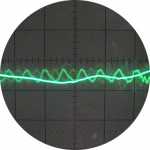
RE: Setback savings - fact or fiction?
I agree, and I think there are two things in play here....
By cathodeRay , 1 day ago
-
RE: Water Hammer After Heat Pump Install
That's really helpful. Yor last sentence confirms it'...
By JamesPa , 2 days ago
-
RE: Help needed with Grant Aerona 3 issues
First time posting so bear with me. Some bits that have...
By Adamp , 2 days ago
-
RE: Mitsu PUHZ-SW120YHA + EHSC-VM20Uk - Performance
All understood. Obviously its a bit house de...
By JamesPa , 2 days ago

